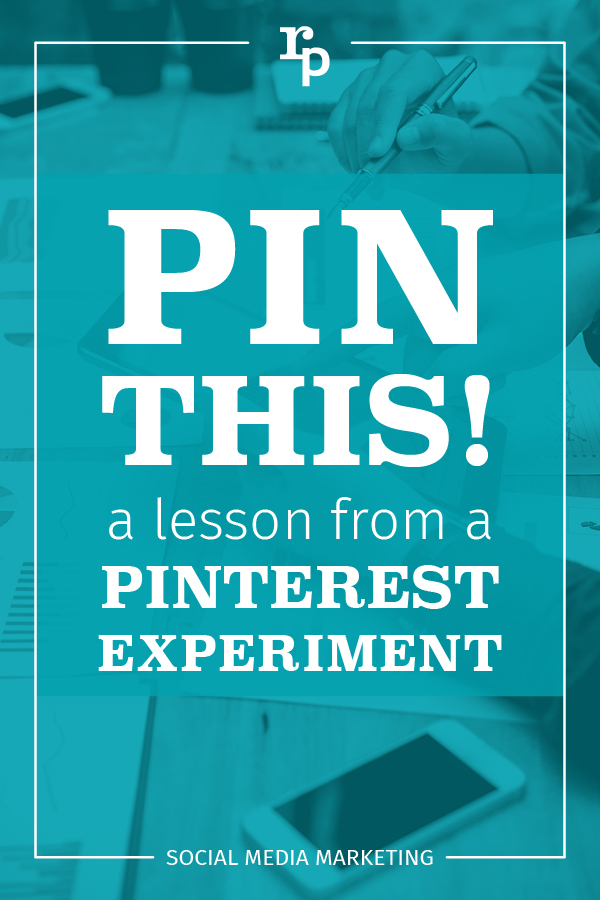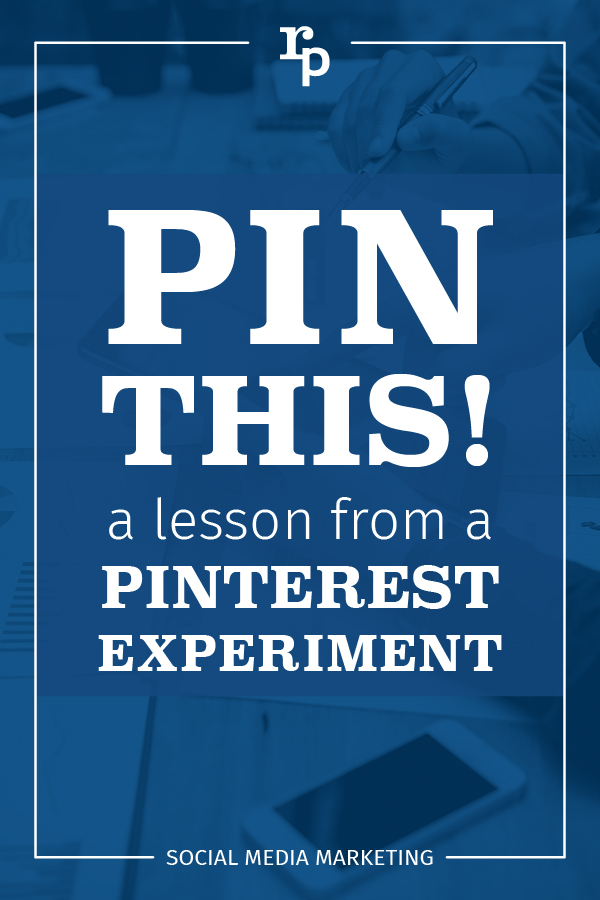Pinterest for Business: 4 Things I’ve Learned in 4 Months
I am a woman of many hats, with labels shifting where ever I go. Roundpeg clients know me as their project manager, freelance connections call me a designer, and my loved ones simply refer to me as an artist. I fix things around the house, I cook, heck, I even make a majority of gifts by hand. No matter what type of project I’m getting my hands into on any given day, my favorite source of inspiration remains the same: Pinterest.
Last fall, when Lorraine came back from the She Podcasts Live conference talking about Pinterest, I knew I wanted in on that project. After nearly 7 years of active pinning on my personal account, it was safe to say I have experience using this creative social media platform. With one simple conversation, the Roundpeg Pinterest account was placed in my control.
In my eyes, handling Pinterest for business purposes was going to be a far easier task than managing our Facebook or Twitter account. The pinning process is incredibly simple. You just share links. Even if you’re sharing someone else’s link (aka repinning), it doesn’t require a conversation. You just repin and move on. Like other platforms, captions and images, for the most part, populate themselves once you paste in the link. Add a couple of hashtags and you’re golden, right?
Fast forward 4 months and I will tell you that the process has NOT been that simple. Pinterest’s unique image search-based platform has created a series of challenges I did not immediately foresee.
1. Despite an Evergreen approach, Pinterest needs attention
Going in I knew that our timeline/feed didn’t have as much emphasis as other platforms. Yes, you still want to get time-sensitive or seasonal pins posted in a timely manner. Unlike Twitter or Facebook, however, each pin you share doesn’t disappear into your profile after it leaves your followers’ timelines.
Instead, pins sit inside online folders called boards. Unless a board is set to private, it is visible by anyone who views your profile. This format makes my organizer heart happy, as I can look at the boards and instantly know where to look. Pinterest has gone as far as adding subfolders to the mix, though that extra level of organization isn’t something we’ve fully taken advantage of on the Roundpeg account…yet.
Being a search-based platform, pins have an extended shelf-life. Pretty tempting to bogart a search term by pinning the same links over and over, yeah? Think again! Pinterest has parameters in place that may flag duplicate pins up to 4 months after the initial pin is posted. Don’t worry, there are ways to work around that, too!
2. Images are nearly more important than the content being shared
Ok, so this could be an argument for any platform, but visuals are especially important in Pinterest. Like Instagram, images are the main focus of any search. You type in a few keywords, and a wave of images fills the page. As you scroll down, suggestions to narrow (or deviate from) your search will appear. Where Pinterest begins to really differ from Google Images or Instagram is the AI behind your search. Pinterest takes into consideration the images you click on and uses that information to hone in links more closely related to those items. This saves us visual thinkers a TON of time when on the hunt for something specific.
Not only will varied photos keep your posts fresh in search feeds, your boards appear more enticing as well. In order to save your visitors from seeing the same image over and over again, I recommend creating 2-4 images for each link you plan to share. I would also highly suggest creating title images for your boards as well. Not only will custom images make your profile appear more polished, it’ll make information easier to find, too.
While hunting, also notice how Pinterest graphics differ from those you see on Facebook or Twitter. Unlike those platforms, pins are typically designed portrait style. The aspect ratio of most popular pins is similar to the dimensions of your phone. Why? Mobile users dominate this platform. Recent studies have shown that 85% of users access the site via the mobile app.
3. Impressions Grow (and Plateau) Quickly, but Engagements Keep Climbing
Graphics aside, it’s pretty easy to ramp up impressions in Pinterest…at first. After six weeks of active posting, we jumped from 25,000 unique views to over 106,000- that’s a 320% increase! The impressions continued to climb over the next few months, but not as quickly. This past month, despite a fairly rigorous posting schedule, we noticed a dip in impressions.
Engagements (interactions) on our posts are a different story. Although the numbers appear smaller at a glance, a deeper dive reveals a much more steady climb than that of impressions. Knowing people see our pins is important, yes, but proof that users are actually interacting with our pins is what really shows the method to our madness is paying off!
4. Scheduling tools may be different, but a community-based strategy remains the same
Successfully marketing on Pinterest requires a good set of tools, just like any other social media platform. Thanks to a stellar recommendation from Kim Sutton, we picked up a free trial of Tailwind and ran with it. Much like Hootsuite or Buffer, it has a scheduler. You have the ability to create queues and set posting times based on when your community is active. Where Tailwind really diverges from other scheduling platforms is the addition of Tribes.
A Tribe is a mini-community within Tailwind where like minded users can easily share pins related to the shared topic. We, for example, are members of tribes centered around small business, blogging, digital marketing, and podcast promotions. Many of these groups have a 1 to 1 pinning ratio, meaning you must repin at least one other post for every pin you share to the group. Not only are tribes great for your brand’s exposure, you get to meet a lot of like-minded users and share their content, too.
When I see another user interacting with our posts, I like to check out their profile as well. If our interests are in line, I give them a follow. If not, I still try to show some love and share a couple of their pins to our boards. This, however, is about as close as I typically get to “talking” to other pinners…which my more introverted side appreciates.
Good news, I still love Pinterest
Now that I’m into my second quarter of managing Roundpeg’s Pinterest account, I can safely say I’m still working with a platform I love. Like any social media platform, it requires constant love, care and attention. In the four or so months since we revived our Pinterest account, the Roundpeg team has also taken on pinning for a few of our clients and have seen great results.
Interested in trying out Pinterest for your business? If you are hands-on like me, but need a little more guidance I highly suggest checking out our new resource center, Digital Toolbox. Those of you who do not have the time to dedicate to another social media platform, be sure to give our content team a shout.
looking for more marketing tips?
Check out all the resources in our Digital Toolbox
Does Pinterest make sense for B2B companies
Surprisingly, the answer to that question is yes. With just a little bit of attention, it drives about 10% of our total traffic every day.


